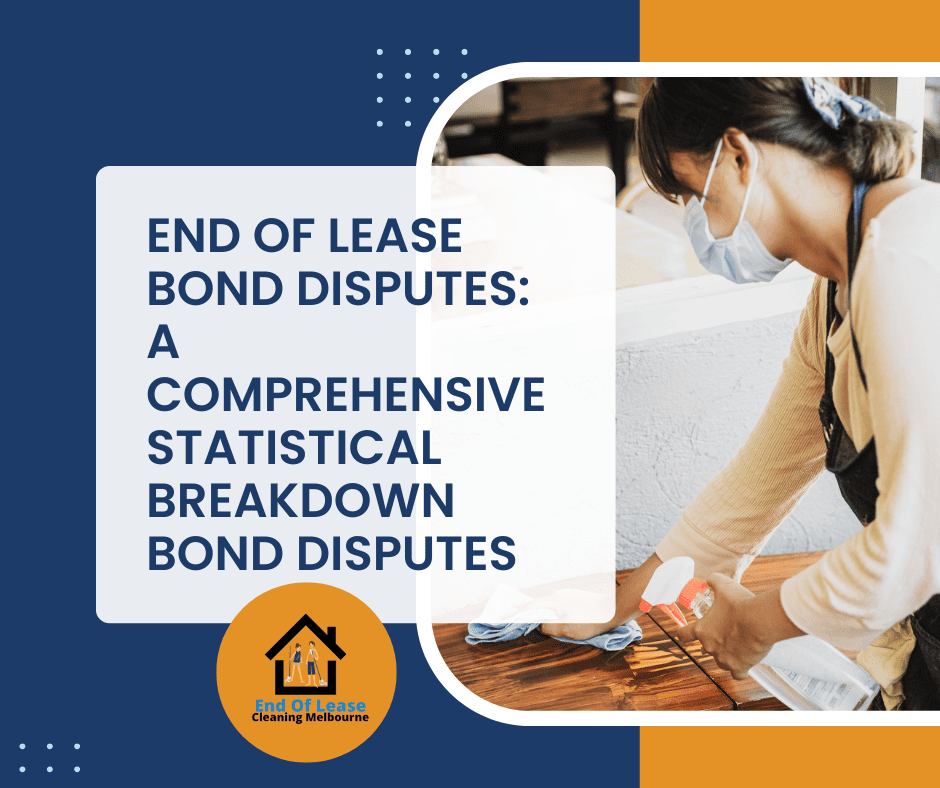Renting is a frequent issue that can be stressful for both the tenant and the landlord. Most arguments that emerge when residential tenancies are nearing an end are over the return of the bond money. The End of lease bond disputes report is a statistical description of bond claim disputes, including their nature, results, and methods for avoiding disputes. Without sacrificing its ease of reading, the survey gathers relevant persons and trends of the final part dispute sector in large numbers.
Overview of Bond Usage and Disputes
- At the end of a lease, tenants can expect to have their bond returned—it tends to be the equivalent of four weeks’ rent—so long as they return the property in good condition and have upheld all their obligations. However, many tenancies end in disputes over the bond, requiring settlement via the assistance of a third party or through a tribunal process.
Bond Refund Statistics (Annual National Data): - 64.2% of all lodged bonds are fully refunded to tenants without deduction. Based on a national average of 650,000 tenancies annually, this equates to approximately 417,300 full refunds.
- 25.8% of bonds are partially refunded, typically reflecting minor deductions for cleaning or damage. This affects around 167,700 tenants.
- 10% of bonds—approximately 65,000 cases—are withheld in full by landlords, often due to substantial cleaning costs, repair of damages, or unpaid rent.
- These statistics confirm that more than one in three tenancy conclusions involve some level of end of lease bond dispute or deduction.
Dispute Resolution Outcomes
- A significant majority of bond-related issues are resolved without escalation:
- 617,500 of the 650,000 annual bond returns (95%) are resolved through direct agreement between parties.
- 32,500 disputes (5%) escalate to formal proceedings, such as tenancy tribunals or mediation services.
Among the escalated cases:
- Around 70% are settled through mediation without tribunal hearings.
- Of those reaching tribunals, 60% are resolved in favour of tenants, while 40% result in landlord-favoured outcomes or shared responsibilities.
Common Causes of Bond Disputes
- Disputes over property condition, financial obligations, and differing interpretations of lease agreements typically trigger bond disputes. The breakdown of causes across all disputes is as follows:
- Cleaning Disputes (21.4%): The leading cause, affecting over 6,900 tribunal cases per year.
- Damage vs. Wear and Tear (18.9%): Covering 6,100+ cases annually, often requiring expert testimony or documentation.
- Unpaid Rent (17.3%): Approximately 5,600 claims relate to rental arrears.
- Maintenance and Gardening (9.2%): Seen in about 3,000 disputes, especially in freestanding homes.
- Odours and Pest Infestations (7.8%): Roughly 2,500 disputes, commonly associated with pets.
- Other (25.4%): Includes disputes over fixtures, lost keys, and breaches of minor conditions.
Tribunal and Legal Findings
- Data from tenancy tribunals provides deeper insight into the evidentiary challenges and legal judgments in bond disputes:
- 8,000 to 9,000 disputes are formally heard in tribunals annually.
- 70% of cleaning-related cases are dismissed or ruled partially in favor of tenants.
- 38–42% of landlord bond claims are unsuccessful due to insufficient documentation.
- When landlords win, average claims range from $320–$680, depending on severity and region.
- This underlines the legal principle of onus: landlords must prove the justification for withholding any portion of the bond.
Regional Variation in Bond Disputes
- While national trends are consistent, certain regions show notable deviations:
- New South Wales (NSW) processes over 180,000 bond transactions annually. The dispute rate here is about 4.7%, slightly below the national average.
- Victoria sees a higher dispute incidence, particularly around damage claims in metropolitan areas.
- Queensland reports strong outcomes for tenants, with 72% of formal disputes resolved in their favor.
- Western Australia and South Australia report higher landlord success in cleaning disputes, possibly due to stricter exit condition enforcement.
Financial and Emotional Impact
Bond disputes carry measurable costs and stresses:
- Tenants risk delays in securing new housing. The average wait time for disputed bond returns exceeds 30 days.
- Landlords face legal fees and longer vacancy periods, averaging 17–22 days of lost rental income during dispute resolution.
- Property managers spend an estimated 12–18 hours per case handling documentation, liaising with parties, and tribunal preparation.
- Prevention and Best Practices
- Proactive steps can dramatically reduce dispute incidence. Deep data from industry reports highlights these practices:
- Condition Reports:
- Properties with detailed, photo-based entry reports have a 48% lower chance of bond disputes.
Professional Cleaning:
End of lease cleaning by certified professionals reduces dispute likelihood by 57%.
Pre-Exit Inspections:
Where landlords offer walkthroughs or early inspections, post-exit disputes drop by 33%.
Clear Lease Clauses:
Including transparent terms for cleaning, damage, and garden care lowers misunderstanding by 41%.
Policy Developments and Reforms
- Several legislative initiatives aim to improve outcomes:
- Digital Evidence Submission: Online lodgement platforms are in place in most jurisdictions, cutting tribunal hearing times by up to 40%.
- Dispute Resolution Panels: Dedicated tenancy mediation centers resolve issues within 15 business days in pilot regions.
- Standardised Checklists: State-issued cleaning and condition checklists now serve as benchmarks in tribunal cases, used in over 75% of rulings.
- Fines for False Claims: New penalties, ranging from $1,100 to $3,300, discourage unfounded landlord claims.
Future View
Improved technology, better tenant education, and a shift toward fairer tribunal processes point to a reduction in formal end of lease bond disputes over the next five years. However, housing affordability pressures may drive up overall tenancy stress, possibly increasing the end of lease bond disputes despite falling percentages.
Conclusion
The End of lease bond disputes affect an estimated 230,000–240,000 tenancies annually to varying degrees. While modest on a case-by-case basis, the financial stakes have systemic impacts when scaled nationally. Improved communication, better documentation, and regulatory reform remain the keys to minimising friction.
With continued refinement of end of lease bond disputes resolution frameworks and digital reporting systems, the rental sector can significantly reduce the duration, cost, and volume of end of lease bond conflicts.
Resources:
https://www.sacat.sa.gov.au/case-type/housing-and-rentals/end-of-tenancy-disputes
https://www.acat.act.gov.au/case-types/rental-disputes/rental-bond-disputes




